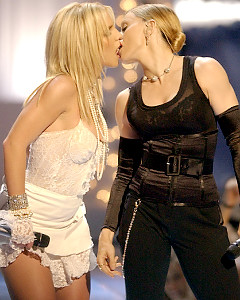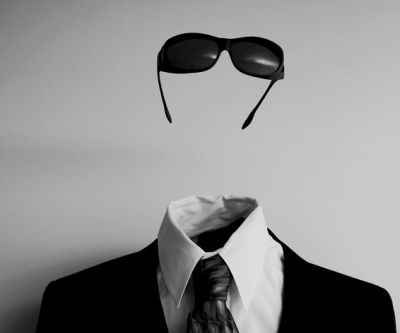(Make sure to listen to the video at the end of the blog)
Recent debates about hip-hop’s misogynist, homophobic, violent, and materialistic nature and lyrics have permeated the airwaves for some time now. Commentators and politicians often point to your typical suspects—black men—for the demise of our culture, exploitation of women, and indoctrination of children. Hip-Hop has been the shame of the nation, yet has brought vast amounts of wealth to record label executives and campaign contributors. This on going fight with hip-hop has even emerged within feminist communities. Often reiterating the concerns that have been voiced by politicians and faith based groups.
As I lay curled up in my bed my, waiting for my morning alarm to go off, I get a rather interesting surprise. Instead of the typical morning inspirational mix, with all my “you can do it” music, Kid Cudi’s Make Her Say featuring Kanye West, Common, and a sampling of Lady GaGa’s Poker Face as background seeped slowly into my ears like Blackstrap Molasses with pounding beats and incessant “Pa-Pa-Pa’s.” I had no other choice but to get up. After listening to the song I began to really like it. Indeed, it made me say, “oh ah oh oh ah ah ah oh oh.” But what I found most interesting, if we divorce ourselves from negative articulations about hip-hop and suspend our disbeliefs was that this song was indeed, if read differently, a atypical discourse about gender and sexuality. Could it be that hip-hop is a conduit for queer desires?
Cudi’s Make Her Say gives that impression. Within the first few lines we hear Cudi’s and GaGa’s voices intertwining (like sex) to make a rhythmic melody, each with a purpose. As we hear GaGa saying, “Pa-Pa-Pa Poker Her Face” Cudi interrupts and says, “Me First.” Initially, this “me first” makes no sense until one is finished listening to the song. How might one be able to read the “me first” statement? If we are to take all the discourse that is involved in this song, then what is suggested is that we’re working with queer relationships. “Me first” can represent a multiple sex partner encounter. In other words, Cudi may be the first to engage in a sexual encounter with our female character. Cudi’s verse continues to undermine traditional gender norms in regards to sexuality because it is stated, “ She wanna have whatever she like/she can if she bring her friend/ and we can have one hell of a night.” The initial lines highlights female agency. Our female character is able to articulate what she wants, further it can be read that by bringing her friend—be they male of female—Cudi, the female character, and the friend will engage in sexual behavior. They challenge, as was describe by Gayle Rubin, portions of the charmed circle that value heterosexuality and monogamous dyads. The engagement of a threesome subverts that. Finally, in Cudi’s verse he states, “Now I ain’t got trip bout them niggas who like her/ cuz me and mommy know, who could really make her go.” A few initial thoughts have to do with the idea of a male not being jealous about other men being attracted to a female he is involved with. Victoria Robinson states in her My Baby Just Cares for Me: Feminism, Heterosexuality and Non-Monogamy that “jealousy is considered in terms of how it upholds the institution and ideology of monogamy (Robinson, 1). Further, that non-monogamy can inform and transform heterosexual relationships and other social relations (Robinson). Within this non-monogamous relationship that has formed, jealousy and “control” as perpetuated by the male is not evident. In fact, he could care less what other men might do because both him and her know who turns her on the most, which is revealed at the end of the song.
The hook of the song is a challenge towards non-procreative sex—oral sex. Rubin, again, classifies this outside the “charmed circle”; however, this is amendable particularly if you’re comparing homo/hetero oral sex. In our case, it is hetero oral sex.
West’s verse of the song, perhaps, is the best in terms of challenging gender and sexual norms. Again, much like Cudi’s initial line, West discusses the agency of this female. “She say she want whatever she like/ she say she gonna bring her friend/ and we gonna have a hell of a night/ through the day.” This is a female articulating her desires. Furthermore, she informs Kanye of her plans to bring a friend. Some may assume that her friend is a female, but that is to operate within heteronormative lenses. It its very well possible that she may bring a male friend or a transgender friend. West’s verse continues to discuss the power of this woman and his weakness. “Getting brain (oral sex) in the library cuz I love knowledge/ when you use your medulla oblongata (head)/ and give me scoliosis until I comatoses’.” This represents the vulnerability and weakness of West at that moment. He can become weak, feeble, and unable to move from this woman. Our female character has strength. It is similar to Lynne Segal’s argument that there is a heightened discourse that men are dominant in sex. This narrative has to be upheld because not to would show the vulnerability of men and open various sexual avenues for subversion by women.
Common’s verse offers least to my queer reading of this song, except for, again, the notion of female agency. Our female character demands what she wants and then requests that Common brings one of his friends!
Finally, the part that offers the most potential is GaGa’s last verse: “can’t read my, can’t read my/ no he can’t read on my poker face/ she got me like nobody.” The joke essentially is on us, perhaps excluding Cudi (after all he did write it). However, the only one who can really please her is a woman. During sex these men can’t read her poker face, they can’t see where she ultimately finds the most pleasure (“she’s got me like nobody”).
To me this suggests that hip-hop, like all other things can be queered. This narrative that is offered can challenge the Second Wave discussions of how hip-hop oppresses women and maintains power dynamics among men and women. This one song does not speak to the entirety of hip-hop, nor does my reading reflect how most will analyze the work. However, what Cudi’s song can make us say is that hip-hop might and probably does have a pa-pa-pa poker face pa- pa Poker Face!








